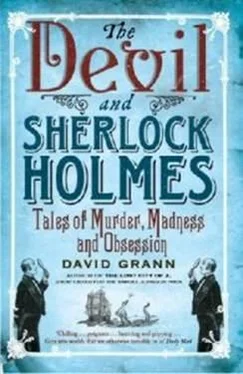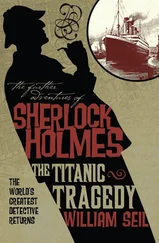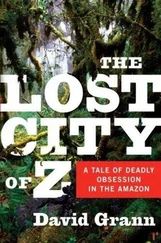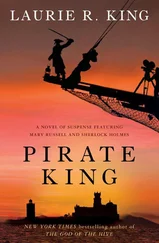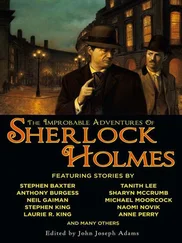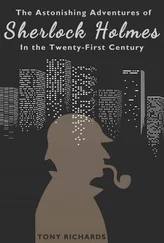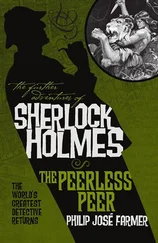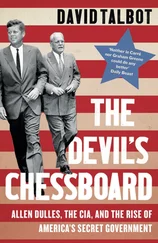After a brief stop to count the money, he got back in the car and headed out again. As he approached the golf course, the bills neatly stacked beside him, he noticed an unmarked car on his tail. He turned onto another street, just to make sure. There it was again. Then he spotted a police car pulling out behind him. He hit the gas as hard as he could, trying to outmaneuver them, turning left, then right, right, then left. He went past the North Pompano Baptist Church and the Kraeer Funeral Home, past a row of pink one-story houses with speedboats in the driveways, until he found himself on a dead-end street. As he spun around, he saw that a police car was barricading the road. One of the officers, Captain James Chinn, was reaching for his shotgun. There was a small gap between Chinn’s car and a wooden fence, and Tucker, his body pitched forward in his seat, sped toward it. Chinn, who had spent almost two decades as a detective, later said he had never seen anything like it: the white-haired figure barrelling toward him seemed to be smiling, as if he were enjoying the showdown. Then, as the car skidded over the embankment, Tucker lost control and hit a palm tree. The air bags inflated, pinning him against the seat.
The police were stunned when they realized that the man they had apprehended was not only seventy-eight years old-he looked, according to Chinn, “as if he had just come from an Early Bird Special”-but one of the most notorious stickup men of the twentieth century. Over a career that spanned more than six decades, he had also become perhaps the greatest escape artist of his generation, a human contortionist who had broken out of nearly every prison he was confined in.
One day in 2002, I went to meet Tucker in Fort Worth, Texas, where he was being held in a prison medical center after pleading guilty to one count of robbery and receiving a thirteen-year sentence. The hospital, an old yellow brick building with a red tiled roof, was on top of a hill and set back off the main road, surrounded by armed guards and razor wire. I was handed a notice that said no “weapons,” “ammunition,” or “metal cutting tools” were allowed, and then escorted through a series of chambers-each door sealing behind us before the next one opened-until I arrived in an empty waiting room.
Before long, a man appeared in a wheelchair pushed by a guard. He wore brown prison fatigues and a green jacket with a turned-up collar. His figure was twisted forward, as if he had tried to contort it one last time and it had frozen in place. As he rose from the wheelchair, he said, “It’s a pleasure to meet you. Forrest Tucker.”
His voice was gentle, with a soft Southern lilt. After he extended his hand, he made his way slowly over to a wooden table with the help of a walker. “I’m sorry we have to meet here,” he said, waiting for me to sit first.
Captain Chinn had told me that he had never met such a gracious criminal: “If you see him, tell him Captain Chinn says hi.” Even a juror who helped convict him once remarked, “You got to hand it to the guy-he’s got style.”
“So what do you want to know?” Tucker said. “I’ve been in prison all my life, except for the times I’ve broken out. I was born in 1920, and I was in jail by the time I was fifteen. I’m eighty-one now and I’m still in jail, but I’ve broken out eighteen times successfully and twelve times unsuccessfully. There were plenty of other times I planned to escape, but there’s no point in me telling you about them.”
As we sat in a corner by a window overlooking the prison yard, it was hard to imagine that this man’s career had featured wanted posters and midnight escapes. His fingers were knotted like bamboo, and he wore bifocals.
“What I mean by a successful escape is to elude custody,” he continued, squinting out the window. “Maybe they’d eventually get me, but I got away at least for a few minutes.”
He pointed to the places along his arm where he had been shot while trying to flee. “I still have part of a bullet in me,” he said. “They all opened up on me and hit me three times-in both shoulders with M16 rifles, and with buckshot in the legs.”
His voice sounded dry, and I offered to buy him a drink from the vending machine. He followed me and peered through the glass, without touching it. He chose a Dr Pepper. “That’s kind of like cherry soda, isn’t it?”
He seemed pleased. When I gave him the drink, he glanced at the candy bars, and I asked him if he wanted anything else. “If it’s not too much trouble,” he said, “I’d like a Mounds.”
After he finished eating, he began to tell me what he called “the true story of Forrest Tucker.” He spoke for hours, and when he grew tired he offered to continue the next morning. During our conversations, which went on for several days, we always sat in the corner by the window, and after a while he would cough slightly and I would offer to buy him a drink. Each time, he followed me to the machine, as the guard watched from a distance. It was only during the last trip to the machine, when I dropped some money, that I noticed his eyes were moving over everything-the walls, the windows, the guard, the fences, the razor wire. It occurred to me that Tucker, escape artist par excellence, had been using our meetings to case the joint.
“The first time I broke out of the can I was only fifteen,” Tucker told me. “At fifteen, you’re pretty fast.”
It was the spring of 1936, and he had been incarcerated for stealing a car in Stuart, Florida, a small town along the St. Lucie River which had been devastated during the Depression. He told the police that he took it “just for a thrill,” but as he sat in jail the thrill gave way to panic, and when a jailer removed his chains he darted out. Several days later, a deputy discovered him in an orange grove, eating a piece of fruit. “That was escape No. 1,” Tucker says. “Such as it was.”
The sheriff decided to transfer him to reform school. During his brief flight, however, Tucker had slipped a half-dozen hacksaw blades through the cell window to a group of boys he had met inside. “They hadn’t broken out yet and still had the blades,” he says. That night, after sawing a bar, he slithered out, helping two other boys squeeze through the tiny opening.
Unlike the others, Tucker knew the area. As a kid, he had spent a fair amount of time by the river, and it was in the river that the police found him and another boy, about an hour later, hiding with just their noses above water. The next day, the Stuart Daily News detailed his exploits under the headline “TRIO ESCAPE BY SAWING BARS OF CELL LAST NIGHT… SUPPLIED WITH HACK-SAWS, COLD CHISELS AND FILES BY BOY.”
“That was escape No. 2,” Tucker says. “A brief one.”
Like the outlaws he read about in dime novels who were forced into banditry by some perceived injustice, Tucker says that “the legend of Forrest Tucker” began on the morning when he was unfairly sent away for only a minor theft. The story, which he repeated even as a boy, eventually spread throughout the town, and over time the details became more ornate, the theft more minor. Morris Walton, who used to play with Tucker as a child, says, “My sense is he spent his life in jail for stealing a bicycle and simply trying to escape. If he became bad, it was only because the system made him that way.”
What Walton knew of Tucker’s upbringing reinforced that impression. His father was a heavy-equipment operator who disappeared when Tucker was six. While his mother struggled in menial jobs in Miami, Tucker was sent to live with his grandmother, who was the tender of the bridge in Stuart. There he built canoes and sailboats out of scrap metal and wood, which he gathered along the riverbank, and taught himself to play the saxophone and the clarinet. “It wasn’t like I needed a father to order me around,” he says.
Читать дальше
